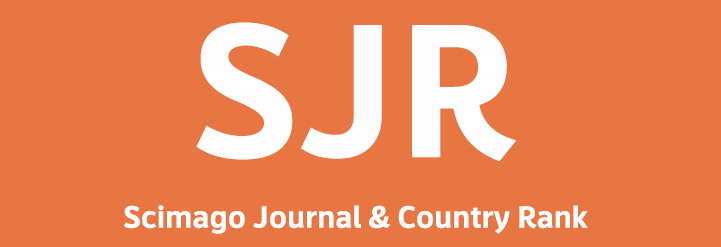DESIGN OF LUBRICANTS FOR CNG-CONVERTED GASOLINE ENGINES
DOI:
https://doi.org/10.29017/SCOG.39.3.96Keywords:
compressed natural gas, lubricant, used oilAbstract
The objective of this study is to develop a lubricant formula for the gasoline engine that has been converted to compressed natural gas (CNG-fueled). The lubricant specification is SAE 15W40 API SL. This study was conducted in six stages, namely; i). lubricant formulation, ii). laboratory scale production, iii). Laboratory analysis, iv). pilot scale production and laboratory analysis, v). test performance through bench test or a road test, vi). final data analysis and evaluation. A laboratory test of physical and chemical properties of lubricants refers to the Indonesian National Standard (SNI), followed by road tests up to the mileage of 10,000 kilometers. The result showed that the lubricant formula obtained can work well to 10,000 kilometers.References
Adril, E., Abdullah, S., Muchtar, A., & Omar, K. (2009). Comparative study of characteristic of lubricant oils in gasoline and compressed natural gas engines. European Journal of Scientific Research, 30(2), 282- 293.
BSN, 2005, Klasifikasi dan Spesifikasi Pelumas SNI 06-7069-2005, Badan Standarisasi Nasional, Jakarta.
Danane, F., A. Ahmia, A. Bakiri & N. Lalaoui, 2014, Experimental regeneration process of used motor oils, Revue des Energies Renouvelables Vol. 17 No 2 (2014) 345 – 351 .
Durrani, H.A., 2013, Energy Management by Recycling of Vehicle Waste Oil in Pakistan, International Journal of Scientific Engineering and Technology, Volume No.2, Issue No.9, pp : 928-931, ISSN : 2277-1581.
Eltantawi & Bosila, 2012, Wearing Effect of Using Natural Gas in Gasoline Engine Components, Australian Journal of Basic and Applied Sciences, 6 (3): 28-37, ISSN 1991-8178.
Gómez-Rico MF, Martín-Gullón I, Fullana A, Conesa JA, FontR. 2003. Pyrolysis and combustion kinetics and emissions of waste lube oils, Journal of Analytical and Applied Pyrolysis 68-69 : 527-46.
Hanifuddin, M., & Hastuningtyas, S. S. (2011), “Analisa Kerusakan Komponen Mesin Diesel Melalui Uji Fisika Kimia Minyak Lumas API CF-4”. Lembaran Publikasi Minyak dan Gas Bumi, 45(3).
Kamal, A., & F. Khan, 2009, Effect of Extraction and Adsorption on Re-refining of Used Lubricating Oil, Oil & Gas Science and Technology – Rev. IFP, Vol. 64 (2009), No. 2, pp. 191-197
Mensah-Brown, H., 2015, Re-Refining And Recycling Of Used Lubricating Oil: An Option For Foreign Exchange And Natural Resource Conservation In Ghana, ARPN Journal of Engineering and Applied Sciences, VOL. 10, NO. 2, ISSN 1819-6608.
Merai Yash P., 2016, Re-Refining of Used Lubricating Oil, International Journal of Scientific & Engineering Research, Volume 6, Issue 3, March-2015, P.329-332, ISSN 2229-5518
Mohsin, R. & Z. A. Madjid, 2014, Majid, The Effects of Fuel Types on Lubricating Oil Properties of Bi-Fuel Motorcycle, World Applied Sciences Journal 32 (3): 505-511, ISSN 1818-4952.
Pirro, D. M., & Wessol, A. A., 2001, Lubrication Fundamentals, Second Edition, Revised and Expanded, Marcel Dekker Inc., USA.
Suzuki Indomobil, Manual book suzuki APV 2013.
Tyson-Young, C., 2008, Used Oil Situational Analysis in Jamaica, National Workshop on Land-based Sources of Marine Pollution.
Van der Weide, J., Tiedema, P., & van Sloten, P. (1981), “Gaseous Fuels for Internal Combustion Engines”. In New energy conservation technologies and their commercialization: Proceedings of An International Conference, Berlin, 6-10 April, 1981 (Vol. 2, p. 1425). Springer-Verlag.
Downloads
Published
Issue
Section
License
Copyright (c) 2018 SCIENTIFIC CONTRIBUTIONS OIL AND GAS (SCOG)

This work is licensed under a Creative Commons Attribution 4.0 International License.
Authors are free to Share — copy and redistribute the material in any medium or format for any purpose, even commercially Adapt — remix, transform, and build upon the material for any purpose, even commercially.
The licensor cannot revoke these freedoms as long as you follow the license terms, under the following terms Attribution — You must give appropriate credit , provide a link to the license, and indicate if changes were made . You may do so in any reasonable manner, but not in any way that suggests the licensor endorses you or your use.
No additional restrictions — You may not apply legal terms or technological measures that legally restrict others from doing anything the license permits.














